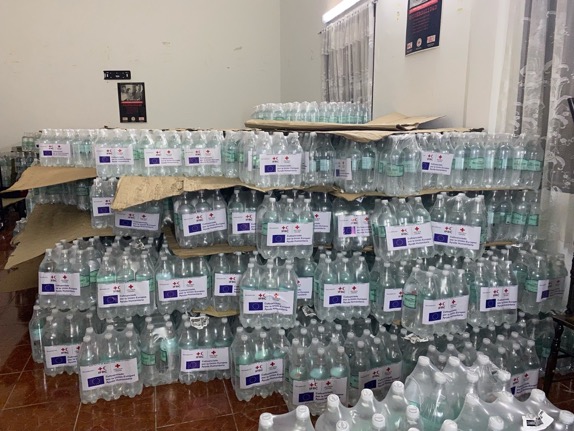The Refugee Crisis in Northern Chile 🇨🇱

Supplies of drinking water for the asylum seekers and other migrants walking through the deserts of northern Chile, Iquique, Chile, October 2021
In October 2021, I travelled to Chile once again—this time to assess and adjust our humanitarian response to the growing Venezuelan migration crisis.
Venezuelan Migration to Chile – A Crisis Within a Crisis
Venezuela’s severe social, economic, and political collapse has led to one of the largest displacement crises in the world. Millions of desperate Venezuelans have been forced to flee their homeland, making long and dangerous journeys across the American continent in search of safety and a new start.
Chile, with its relatively strong economy and job opportunities, has become a key destination for Venezuelan migrants. It is estimated that over 500,000 Venezuelans now reside in Chile, with at least 20,000 more arriving each month—many of them entering the country through the treacherous mountain and desert routes from Peru and Bolivia.
Yet, despite their hope for a better life, Venezuelan migrants in Chile face immense challenges.
Barriers to Integration – Legal, Social, and Economic Struggles
While Chile’s economy offers opportunities, its immigration policies and social climate are not always welcoming:
• Strict Migration Policies – In recent years, Chile has tightened its immigration rules, making it increasingly difficult for migrants to obtain legal status and access basic services. Many asylum seekers are left in limbo, struggling with bureaucracy and unable to work legally.
• Lack of Shelter and Basic Support – Many Venezuelan migrants arrive with nothing and end up in overcrowded shelters, makeshift camps, or even sleeping on the streets, especially in border towns like Colchane and Arica.
• Xenophobia and Social Tensions – As the number of migrants has grown, public perception has shifted, and anti-migrant sentiment has been rising. Many Venezuelans face discrimination in job markets, housing, and daily life, making integration even more difficult.
• Exploitation and Informal Work – Without legal status, many migrants are forced into precarious jobs, where they face abuse, low wages, and lack of job security.
• Mental and Physical Health Challenges – The stress of displacement, poor living conditions, and uncertainty about the future take a huge toll on both physical and mental health. Many migrants do not have access to proper healthcare.
Humanitarian Efforts – Bridging the Gaps
Given these immense challenges, many humanitarian organisations are working hard to provide:
• Emergency shelters and basic necessities for the most vulnerable.
• Legal assistance to help migrants regularise their status.
• Employment and skills training to help migrants integrate into the workforce.
• Community outreach programs to reduce xenophobia and social tensions.
My mission in Chile was to assess how these efforts were working and adjust our response to ensure resources were being used in the most effective way possible.
Field Visits – From Santiago to the Northern Borderlands
During my trip, I visited several key locations:
• Santiago de Chile – The capital, where many Venezuelan migrants try to settle, often facing barriers to housing and employment.
• Arica & Cuya – Northern towns near the Peruvian border, where many migrants arrive exhausted after crossing harsh desert landscapes.
• Iquique & Antofagasta – Cities that have seen large numbers of Venezuelan migrants, leading to both humanitarian efforts and rising social tensions.
• Colchane – A remote border town in the Andean highlands, one of the most dangerous entry points into Chile, where many migrants arrive at extreme altitudes and freezing temperatures, often with no supplies or protection.
A Terrifying Moment on the Road
One of the most unforgettable—and frightening—moments of the trip happened on the way back from Colchane.
As night fell, the high-altitude road became slippery with ice, making driving conditions extremely dangerous. Suddenly, our car lost control, skidding across the road. For a terrifying moment, the vehicle spun out, and it felt like we were going to slide off the cliff.
Our hearts were racing—there was nothing we could do but hold our breath and hope for the best.
Thankfully, our driver remained calm and composed, using his skill and quick thinking to regain control just in time. The car stabilised, and we came to a stop safely. We were shaken, but alive.
It was a harsh reminder of the dangers of working in remote areas, and we were all deeply grateful to have made it through unharmed.
Reflections on the Mission
This trip to Chile was one of deep contrasts—on one hand, witnessing the resilience and determination of Venezuelan migrants, and on the other, seeing the immense hardships they face in their struggle for a better life.
It was also a reminder that migration is not just about numbers—behind every statistic is a person, a family, a story of hope and hardship.
And of course, after our near-miss on the icy road, I left Chile feeling even more grateful for life itself.
Click here to access the album.
